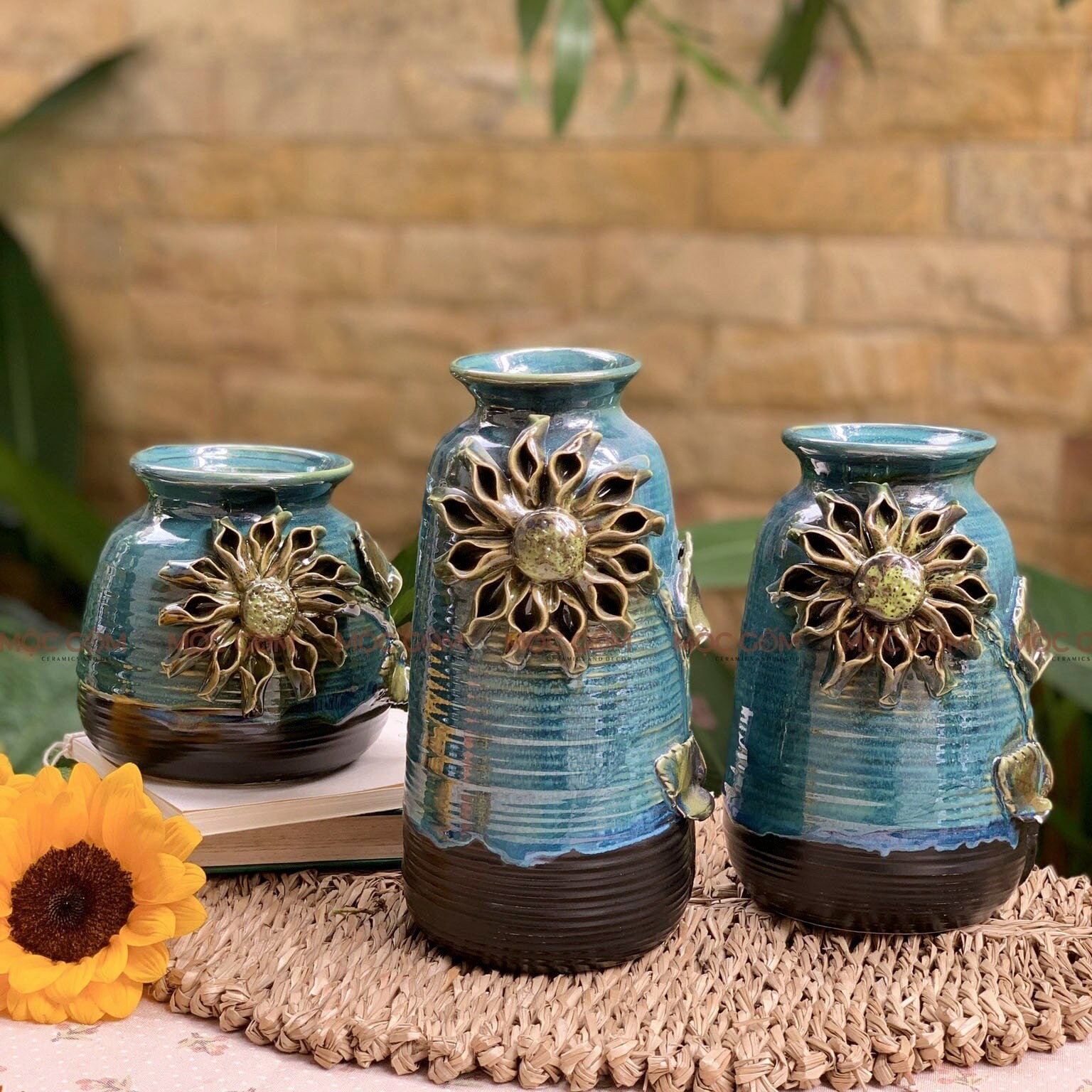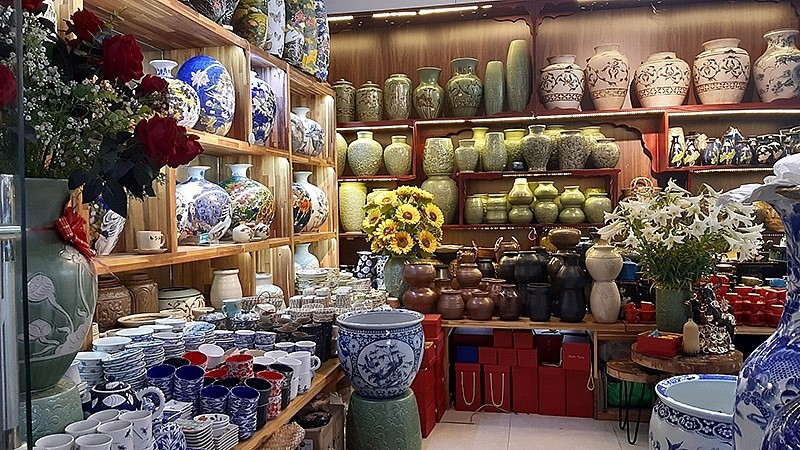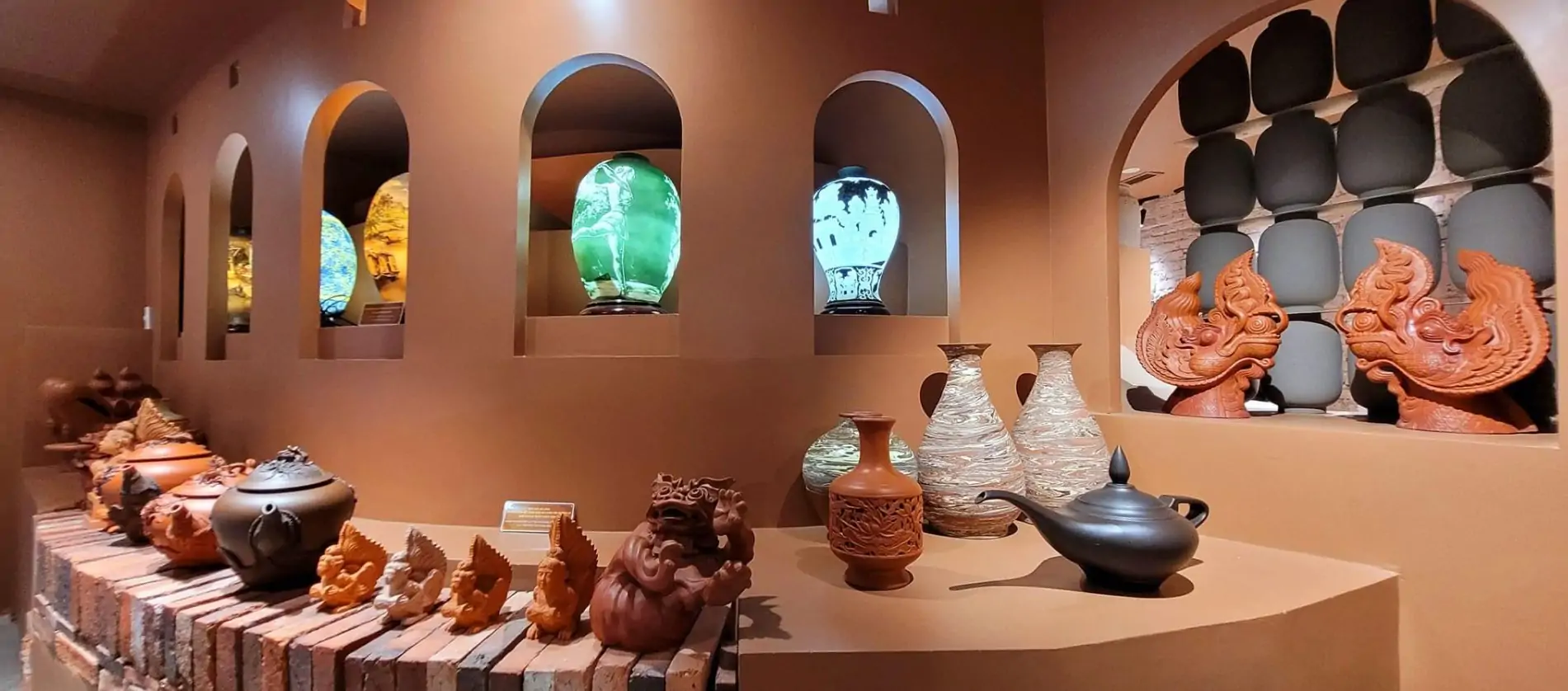News
Compare Traditional and Modern Bat Trang Ceramics Designs
Bat Trang ceramics represent an iconic facet of Vietnamese culture and craftsmanship. Known for their exquisite quality, rich history, and distinctive aesthetic, Bat Trang ceramics have evolved over centuries, blending traditional artistry with contemporary influences. This article explores the nuanced differences and intersections between traditional and modern Bat Trang ceramics designs, revealing how these works continue to captivate collectors, artists, and enthusiasts worldwide.
The Historical Roots of Bat Trang Ceramics

Understanding the foundation of Bat Trang ceramics allows us to appreciate the depth and authenticity embedded in their traditional designs. Bat Trang village, located near Hanoi, has been a ceramic hub since the 14th century, cultivating techniques passed down through generations.
Before delving into specific design comparisons, it is important to recognize the cultural and historical context that shaped these ceramics. Traditional Bat Trang pieces bear the imprints of ancient Vietnamese values, symbolism, and methods, which often contrast with the dynamic, innovative expressions found in modern creations.
Cultural Significance and Origins
Bat Trang ceramics are deeply intertwined with Vietnamese daily life, rituals, and artistic expression. The village’s location along the Red River facilitated trade and cultural exchange, contributing to the distinctive blend of indigenous and external influences visible in traditional ceramics.
The traditional designs served utilitarian purposes like storing food or water but also carried symbolic meanings depicted through motifs such as lotus flowers, dragons, and phoenixes. These symbols conveyed prosperity, spirituality, and protection, making each piece more than just functional art.
Moreover, the origin stories of Bat Trang ceramics highlight the community’s commitment to preserving their craft despite challenges like colonialism, industrialization, and modernization. This resilience underpins the continued relevance of traditional forms even in contemporary settings.
Craftsmanship and Techniques in Historical Context
Traditional Bat Trang ceramics exemplify mastery in hand-forming, glazing, and firing techniques that have remained largely consistent over time. Artisans rely on natural clay from the local area, refining it meticulously to achieve the ideal texture and durability.
Key techniques include wheel throwing, hand painting with cobalt blue underglaze, and wood-fired kilns, all requiring precision and patience. The process emphasizes harmony between human skill and natural materials, producing ceramics that are both aesthetically pleasing and long-lasting.
The durability and beauty of traditional Bat Trang ceramics owe much to these time-tested methods, which contrast with some mass-production approaches seen in modern times. However, as we will explore further, many contemporary artists now integrate digital tools and experimental processes to expand creative possibilities.
Motifs and Symbolism in Traditional Designs
Motifs are vital in decoding the visual language of Bat Trang ceramics. Traditional patterns frequently reflect themes from nature and mythology, serving both decorative and allegorical functions.
Common motifs include:
- Lotus: Symbolizing purity and enlightenment.
- Dragon: Representing power, protection, and imperial authority.
- Phoenix: An emblem of rebirth and dignity.
- Bamboo and plum blossoms: Signifying resilience and hope.
Each motif carries layers of meaning that connect the ceramic to Vietnam’s broader cultural tapestry. The precise depiction of these images requires advanced brushwork skills, honed over years of practice.
The consistent use of these traditional motifs creates a recognizable identity for Bat Trang ceramics, making them treasured heirlooms and cultural artifacts. However, as design trends shift, modern artisans reinterpret these symbols in innovative ways, which we will examine later.
Materials and Techniques: Tradition Meets Innovation

The materials and techniques used in crafting Bat Trang ceramics provide a crucial lens for comparing traditional and modern designs. Material choices and production methods directly influence the aesthetics, functionality, and market appeal of the ceramics.
This section discusses how artisans balance respect for heritage with creative adaptation, highlighting shifts in raw materials, firing technologies, and decorative techniques.
Clay Quality and Preparation
Traditional Bat Trang ceramics rely on natural white clay sourced locally, prized for its fine grain, plasticity, and whiteness after firing. This clay forms the basis of the village’s distinct porcelain-like ceramics.
Artisans prepare the clay by soaking, filtering, and kneading to remove impurities and achieve the desired consistency. This labor-intensive process ensures the final product’s strength and surface smoothness.
In contrast, some modern producers supplement local clay with imported or synthetic materials to reduce costs or introduce new textures. While this can expand stylistic options, purists argue it may compromise the authenticity and longevity associated with traditional ceramics.
However, many contemporary Bat Trang potters maintain a commitment to local clays as a mark of quality and cultural fidelity, blending old and new material practices.
Firing Technologies: From Wood-Kilns to Electric Furnaces
Historically, Bat Trang ceramics were fired in large wood-burning kilns reaching temperatures around 1300°C. This method imparts unique variations in glaze texture and color due to uneven heat distribution and smoke effects.
The randomness of wood-firing contributes to the organic charm of traditional ceramics but limits mass production scalability and environmental sustainability.
Modern workshops increasingly adopt electric or gas kilns, offering precise temperature control, cleaner emissions, and faster firing cycles. This transition allows artisans to experiment with novel glazes and finishes that were difficult or impossible with traditional kilns.
Nevertheless, many traditionalists advocate for preserving wood-firing techniques to retain heritage value and distinctive aesthetics.
Decorative Techniques: Hand Painting vs. Technology-Assisted Design
Decoration is where the tension between tradition and innovation vividly manifests. Traditional Bat Trang ceramics feature hand-painted cobalt blue designs under a transparent glaze, requiring exceptional brush control and artistic vision.
This painstaking process results in subtle tonal gradations and spontaneous brush strokes, making each piece unique. The tactile interaction between artist and clay is central to the artwork’s soul.
Contemporary artists, however, sometimes utilize digital printing, stenciling, or airbrushing to replicate intricate patterns rapidly and with consistent quality. These technologies enable mass customization and creative experimentation beyond conventional palettes.
Some modern Bat Trang ceramics merge handcraftsmanship with technological aids to enhance precision while preserving artisanal touch.
Aesthetic Differences Between Traditional and Modern Bat Trang Ceramics

Moving beyond materials and methods, a critical examination of the aesthetic characteristics of traditional versus modern Bat Trang ceramics reveals how cultural shifts influence form, color, and thematic content.
Both styles exhibit artistic merit but cater to different tastes, contexts, and purposes.
Form and Shape Evolution
Traditional Bat Trang ceramics favor classic shapes inspired by utility and symbolism—vases, bowls, jars, teapots—often with rounded contours and balanced proportions.
These forms emphasize function alongside ornamental appeal, designed to harmonize with everyday rituals or ceremonial uses.
Modern designers often push boundaries by creating abstract, asymmetrical, or minimalist forms reflecting global art trends and individual creativity. They may produce sculptural pieces intended purely for display rather than practical use.
This evolution in shape demonstrates how Bat Trang ceramics adapt to changing lifestyles and artistic philosophies while maintaining ties to heritage through material and technique references.
Color Palette Shifts
Traditional Bat Trang ceramics primarily use a restrained color palette dominated by cobalt blue on white backgrounds, occasionally complemented by brown or celadon glazes.
This limited scheme underscores a timeless elegance and highlights the intricacy of brushwork.
Conversely, modern Bat Trang ceramics frequently employ vibrant colors, metallic accents, and matte finishes. Artists experiment with combinations like pastel hues, bold reds, greens, and even black, expanding visual impact.
The expanded palette appeals to contemporary consumers seeking statement pieces aligned with interior design trends.
Themes and Symbolism Changes
While traditional pieces focus on well-established motifs tied to Vietnamese culture and folklore, modern ceramics explore diverse themes ranging from abstraction, nature-inspired forms, to social commentary.
Some artists revisit traditional symbols but reinterpret them through surreal or minimalist lenses, creating hybrids that challenge viewers’ perceptions.
Others incorporate cross-cultural elements, reflecting Vietnam’s growing openness and cosmopolitanism.
This thematic diversification illustrates the dynamic dialogue between past and present embodied in Bat Trang ceramics.
Surface Texture and Glaze Innovations
Traditional ceramics boast glossy, smooth surfaces achieved through multiple layers of transparent glaze, enhancing durability and visual clarity.
In recent decades, modern artisans experiment with matte, crackled, or textured glazes, adding tactile variety and contemporary aesthetics.
These innovations invite new sensory experiences and artistic expressions, though they sometimes diverge sharply from the pristine finishes characteristic of classical works.
The coexistence of diverse surface treatments enriches Bat Trang ceramics’ repertoire and market appeal.
Market Trends and Consumer Preferences
Examining the commercial landscape helps understand why certain design trends emerge and how consumer demand influences Bat Trang ceramics production.
The interplay between tradition and modernity is shaped not only by artistic impulses but also economic realities and global markets.
Domestic Demand Versus International Appeal
Within Vietnam, traditional Bat Trang ceramics remain popular among older generations and collectors valuing cultural heritage. They are often purchased for religious ceremonies, gifts, or home decoration that honors ancestral customs.
Younger Vietnamese consumers increasingly favor modern designs that reflect contemporary lifestyles and aesthetics, demonstrating a generational shift.
Internationally, Bat Trang ceramics attract buyers interested in authentic ethnic crafts as well as those drawn to avant-garde art pieces. Exporters tailor products accordingly, offering a range of traditional souvenirs and contemporary collectibles.
Pricing and Production Scale
Traditional handmade Bat Trang ceramics typically command higher prices due to the labor-intensive process and rarity.
Mass-produced or semi-automated modern ceramics tend to be more affordable and accessible, broadening market reach but sometimes compromising uniqueness.
Many workshops adopt hybrid production strategies balancing artisan involvement with mechanized steps to optimize cost-efficiency without losing artistic integrity.
Impact of Tourism and Digital Media
Tourism to Bat Trang village boosts demand for ceramics, motivating artisans to diversify offerings and innovate.
Social media platforms showcase Bat Trang artists and their work globally, fostering appreciation and driving trends.
Digital marketing enables niche designers to reach wider audiences interested in bespoke ceramics, encouraging fusion of traditional motifs with modern sensibilities.
This connectivity accelerates creative exchange and commercial opportunities for Bat Trang ceramics.
Preservation and Future Directions of Bat Trang Ceramics
Sustaining the legacy of Bat Trang ceramics requires mindful preservation of traditions alongside openness to evolution. Balancing heritage conservation with innovation ensures the craft remains vibrant and relevant.
This section explores efforts underway to safeguard traditional knowledge, foster artist education, and envision future trajectories.
Cultural Heritage Protection Initiatives
Vietnamese government agencies and cultural organizations actively promote Bat Trang ceramics as intangible cultural heritage.
Programs support artisan training, museum exhibitions, and documentation of techniques aimed at passing skills to younger generations.
These initiatives reinforce pride in Bat Trang’s historical identity and encourage ethical craftsmanship standards.
Education and Skill Transmission
Master craftsmen play a vital role mentoring apprentices, transmitting nuanced skills essential for high-quality traditional ceramics.
Vocational schools incorporate ceramic arts into curricula, blending theoretical and practical learning.
Encouraging youth participation counters risks of skill attrition amid urban migration and industrial competition.
Innovation and Collaboration
Collaborations between traditional artisans and contemporary artists stimulate creative reinvention of Bat Trang ceramics.
Research institutions develop new materials and environmentally friendly processes aligned with sustainable development goals.
International partnerships facilitate cross-cultural projects expanding Bat Trang’s artistic horizons.
Embracing innovation while respecting tradition fosters a dynamic ecosystem for the craft’s future.
Conclusion
The comparison between traditional and modern Bat Trang ceramics designs reveals a rich dialogue between heritage and contemporary creativity. Traditional ceramics embody centuries of cultural symbolism, meticulous craftsmanship, and timeless aesthetics rooted in Vietnamese history. In contrast, modern designs embrace experimentation in form, color, and theme, reflecting evolving societal values and global artistic currents. Both approaches contribute uniquely to the enduring allure and vitality of Bat Trang ceramics, ensuring this iconic craft continues to inspire and resonate across generations and geographies. Balancing preservation with innovation is key to nurturing Bat Trang ceramics’ legacy as a living art form that honors its revered past while boldly shaping its future.
